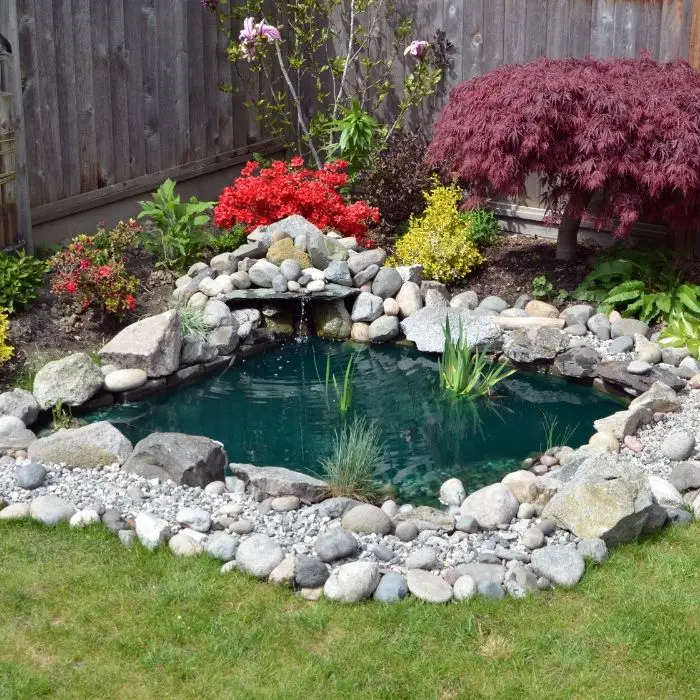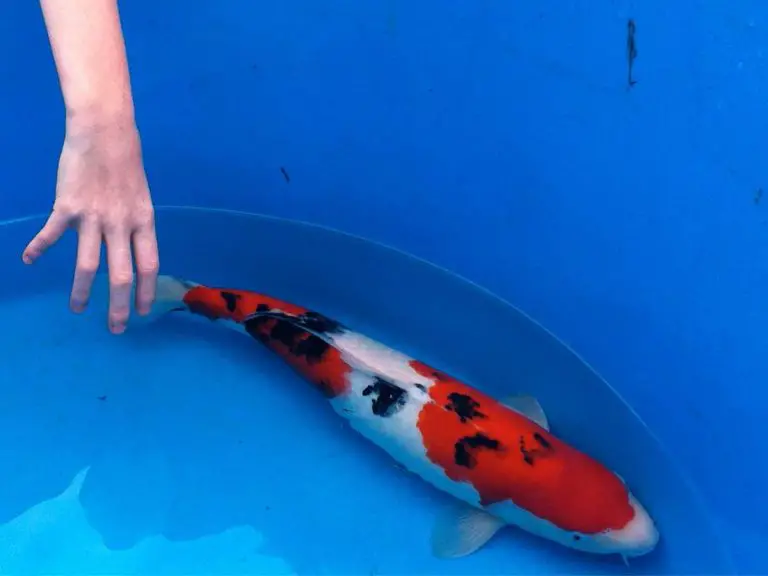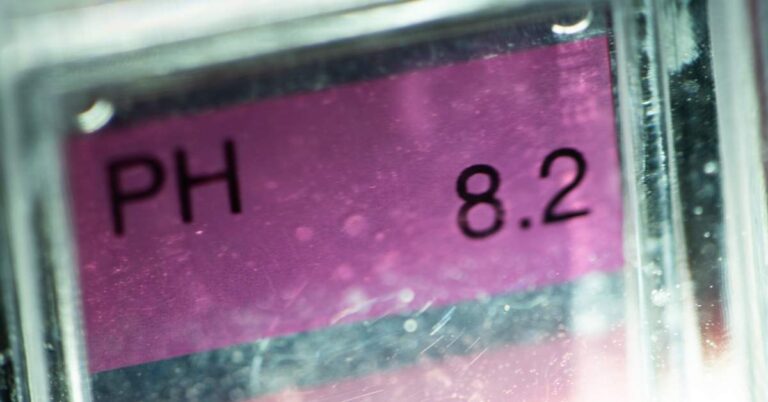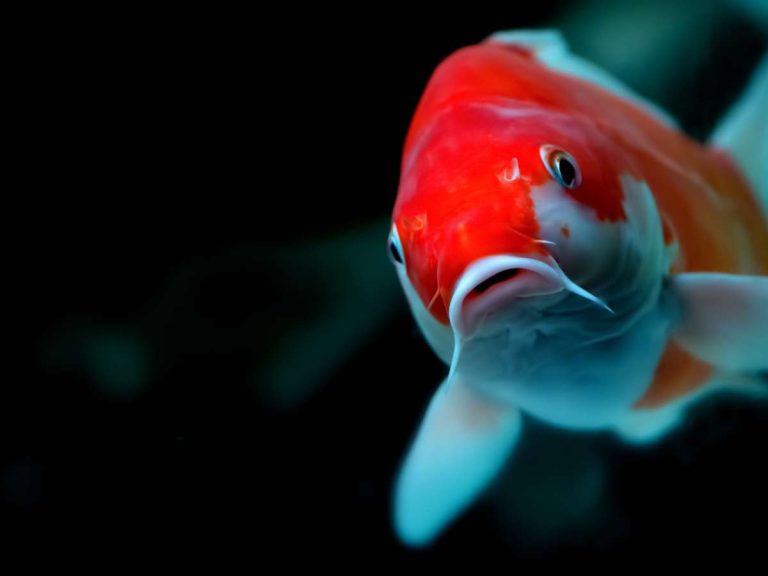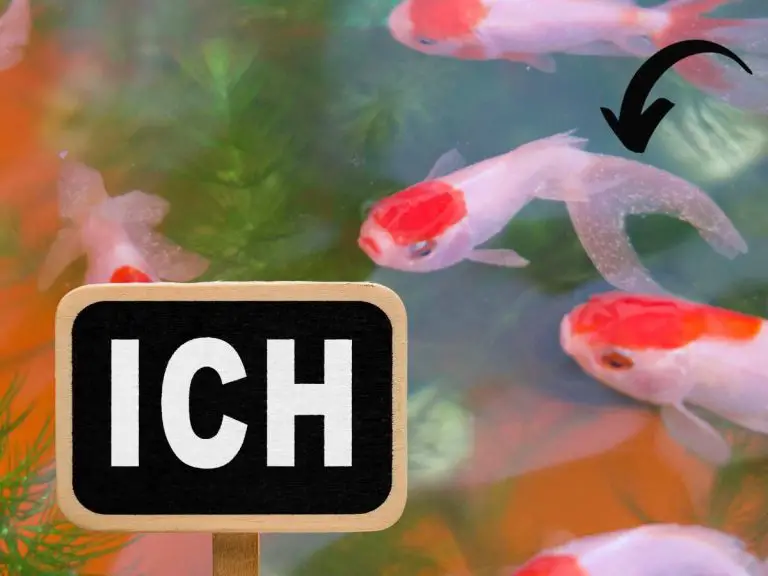How To Make Your Backyard Pond Look More Attractive & Natural – 7 Simple Solutions
Backyard ponds are refreshing and beautiful water features that can be added to almost any type of landscape. It can sometimes be difficult, however, to build a pond that lives up to your aesthetic expectations. When this happens, it’s useful to know a few tips on how to make any backyard pond look better and more natural.
To make your pond look better and more natural, make sure to add several kinds of aquatic plants and stones around the edges. This is a beautiful touch to a small pond and goes a long way towards making it look and feel as natural as possible. If size permits, you should also consider adding bright colored fish such as goldfish or koi as well. Adding waterfalls and fountains is another great way to make your pond look great as well as ensure that the water stays fresh and circulated at all times.
But there’s more to making your pond look great than just adding a few fish and plants. Let’s go over some ways you can make your pond look great and stay healthy all year round.
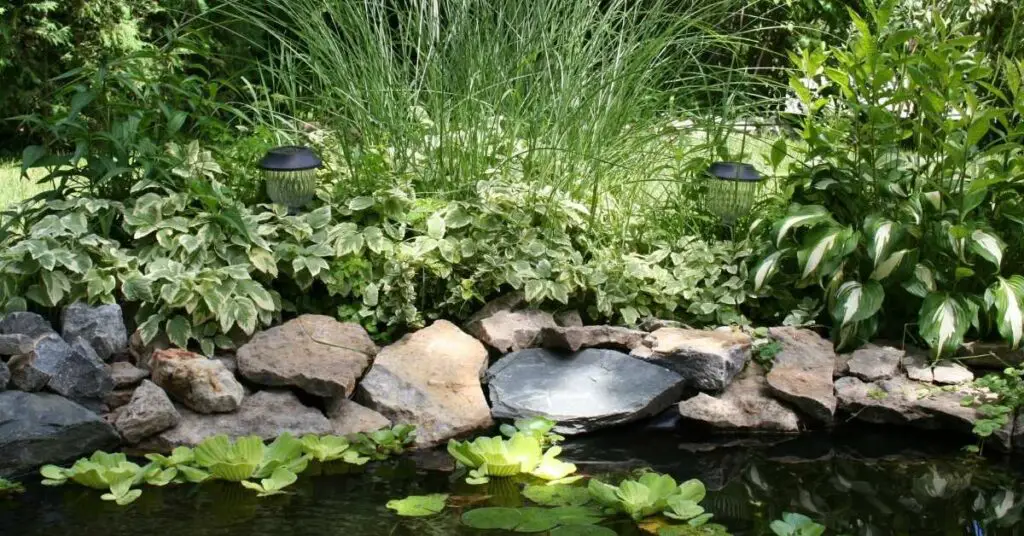
Why an attractive pond matters
Pond have become very popular additions to properties around the world. People enjoy spending time around a clean, well taken care of body of water.
It’s well established that ponds add value to properties, but this assumes that the pond has been well planned and maintained to begin with. A pond that hasn’t been well maintained may need to be dredged out and removed which can be quite costly to a new property owner. This means it’s especially important for pond owners to keep their pond looking healthy and attractive to maintain the value of their property.
So in this way, having a pond is a double edged sword. The pond will indeed add value to your property if it’s properly maintained and attractive, but if it’s an ugly eyesore it can actually detract from the value of your property.
Your pond’s attractiveness is really not much different than any other part of your house or property. If you make it look nice and ensure it’s structurally sound, it will add value and attract prospective buyers. If it looks ugly and appears to need a complete overhaul, prospective buyers will likely stay away or negotiate for a lower price
Related Post: Is A Backyard Pond Worth It?
Things You Can Do To Make Your Pond More Attractive:
Include Plants
Adding plants in and around your pond is one of the easiest and most cost effective ways to not only make your pond look beautiful but also keep it healthy and vibrant as well.
To keep your pond looking naturally beautiful all year long, consider adding plants both in the water and around the edges. This will give your pond a natural look as well as provide important protections against overexposure to sunlight and overgrowth of unwanted organisms like algae.
Plants in and around your pond not only look nice, they also provide shade from the harmful effects of the sun. Too much sun warms the water and when that happens it depletes oxygen levels and encourages the growth of algae. When this happens, it can have deadly consequences for the life inside the pond that depends on oxygen and clean water to live.
If left unchecked for too long, a pond that constantly overheats and isn’t clean can trigger something called “pond turnover” which results in murky, ugly water and the death of everything within it.
Aquatic plants like water lettuce and lilies are especially good for the purposes of shading because they sit right on the water and directly filter any sunlight from penetrating too far into the water. These kinds of plants also look quite beautiful as well.
Related Post: How To Tell If A Pond Has Turned Over, How To Keep Your Pond Cool In Summer & Extreme Heat Waves
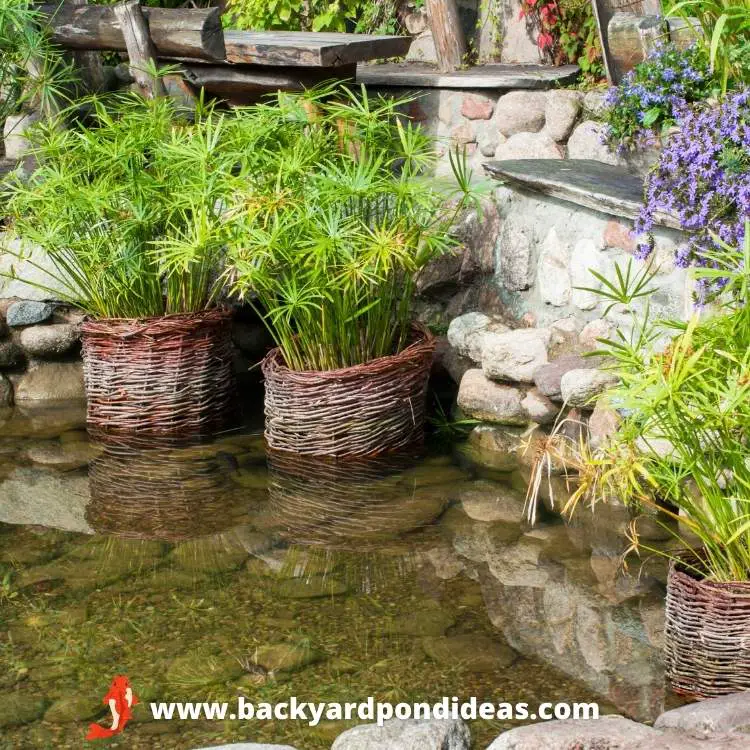
Include Fish
Plants and decorations do quite a bit to liven up a pond and make it look natural, but nothing beats living creatures swimming around in the water to create a truly special space.
Adding fish to your pond is an easy and affordable way to make your pond look as beautiful and natural as possible. Fish are also an important part of a pond’s ecosystem, so if you can strike the right balance between different kinds of fish, as well as adding things like Koi clay, you can actually improve the quality and clarity of the water in your pond.
Many people choose to stock their ponds with Koi fish, and for good reason. Koi fish, with their bright colors, are among the most common and most beautiful of all domestic pond fish. But don’t let looks be the only deciding factor when choosing fish for your pond. Different kinds of fish take on different kinds of roles within your pond’s ecosystem.
Koi are naturally bottom feeder fish. This means they are inclined to scavenge the bottom of your pond looking for food. The reason why we typically see them swimming near the surface is because we feed them floating food.
Bottom feeders are necessary for the health of any body of water because they help remove organic debris from the bottom of the pond. If organic debris, like leaves or leftover food, are left too long at the bottom of the pond they will begin to decay, giving off toxic chemicals and feeding unwanted growths like algae blooms.
If left unchecked, this decay can lead to the dreaded “turnover” phenomenon which can quickly wipe out all life in the pond.
All of this is why it’s so important to have a healthy mix of different kinds of fish in your pond. For example, the Siamese Algae Eater has a body and mouth shaped perfectly for sucking algae off of rocks and the sides of your pond.
One thing to note about bottom feeders is that while they do clean up debris, because they forage around the bottom of the pond they tend to stir up dirt and sediment which can make the water appear cloudy. However, this is not harmful and it will eventually resettle.
Below is a list of some common pond fish as well as the benefits they provide towards keeping your pond clean and free from algae. However, keep in mind that there probably isn’t enough algae in your pond to meet most fish’s nutritional needs so you’ll still need to feed them something else as well.
| Common Fish | Pond Benefits | Ideal pH Range |
|---|---|---|
| Koi | Eats algae and plants | 6.9 -7.8 |
| Guppies | Eats algae | 7.0 – 7.5 |
| High-Fin Shark | Eats rock/log algae | 6.8 – 8.0 |
| Flying Fox | Eats algae, some plants | 6.0 – 7.5 |
| Siamese Algae Eater | Eats most algae | 6.5 – 8.0 |
| Twig Catfish | Eats algae, some plants | 6.0 – 7.0 |
| Bristlenose Pleco | Eats algae | 6.5 – 7.5 |
| Mollies | Eats rock, plant algae | 7.5 – 8.5 |
| Rosy Barb | Eats some algae | 6.0 – 8.0 |
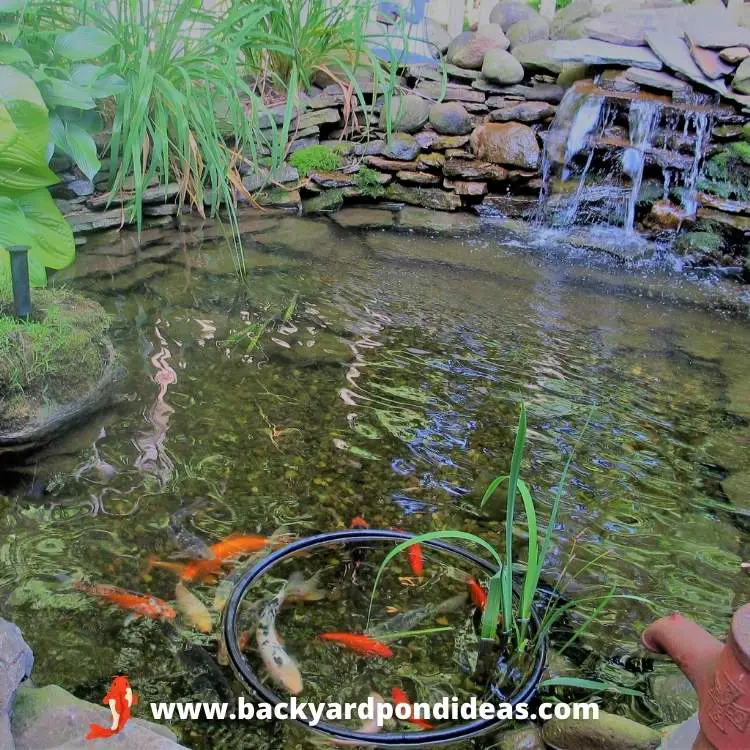
Include Rocks
Similar to fish and plants, rocks not only look nice – they also serve an important purpose within the pond’s ecosystem.
Rocks might appear to be solid, inanimate objects that do little more than sit in your pond and get wet. And while from a literal perspective that’s true, the real purpose rocks serve in a pond is far more complex.
In a backyard or garden pond, rocks serve as homes for beneficial bacteria that helps keep your pond’s water healthy and clear. This beneficial bacteria absorbs and eliminates excess nutrients and organic debris which would otherwise cloud your water and cause algae blooms.
Having an ample amount of stones and rocks of different shapes and sizes at the bottom of your pond is a great and easy way to keep your pond beautiful and clean.
When selecting stones for your pond, make sure you don’t put in any stones with sharp or jagged edges. Fish like to rub their bodies against the bottom and edges of the pond and sharp edges can injure them. You also don’t want to hurt yourself or someone else if you accidentally step in the pond.
Try to aim for a mix of small and large stones for your pond, but be sure to add at least a few very large stones that can be seen from the surface of the water. These stones are not only are beautiful to look at, they also have lots of surface area for beneficial bacteria to latch onto and colonize.
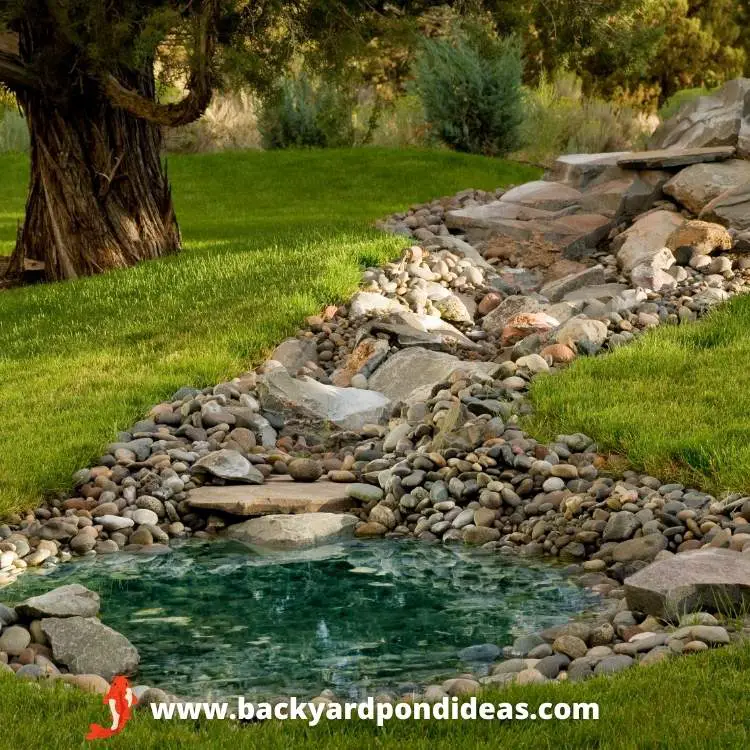
Keep Water Clear
Plants, rocks and fish all play an important role in keeping your pond’s water healthy and clear. But that doesn’t mean you shouldn’t also be actively cleaning your pond’s water with other more direct methods as well.
To keep your pond’s water healthy and vibrant, be sure to invest in an adequate and robust filtration system. Filtration systems can filter out debris and waste as well as promote the growth of healthy bacteria vital to the pond’s ecosystem.
There are two types of pond filtration systems: biological and mechanical.
Mechanial filters pass water through finer and finer filter media to remove smaller and smaller forms of debris. As we’ve discussed, debris, if left unfiltered, can sink to the bottom of your pond and decay which causes the release of toxic gasses and excess nutrients.
Biological filters, on the other hand, work in the opposite way as mechanical filters. Biological filter media adds beneficial bacteria to the water that passes through it. This bacteria is essential breaking down excess nutrients in the water as well as fish and animal waste. A biological filter is an essential tool in maintaining the delicate balance of your pond’s ecosystem.
Related Post: 5 Best Pond Vacuums for Small Ponds: Effective & Affordable!
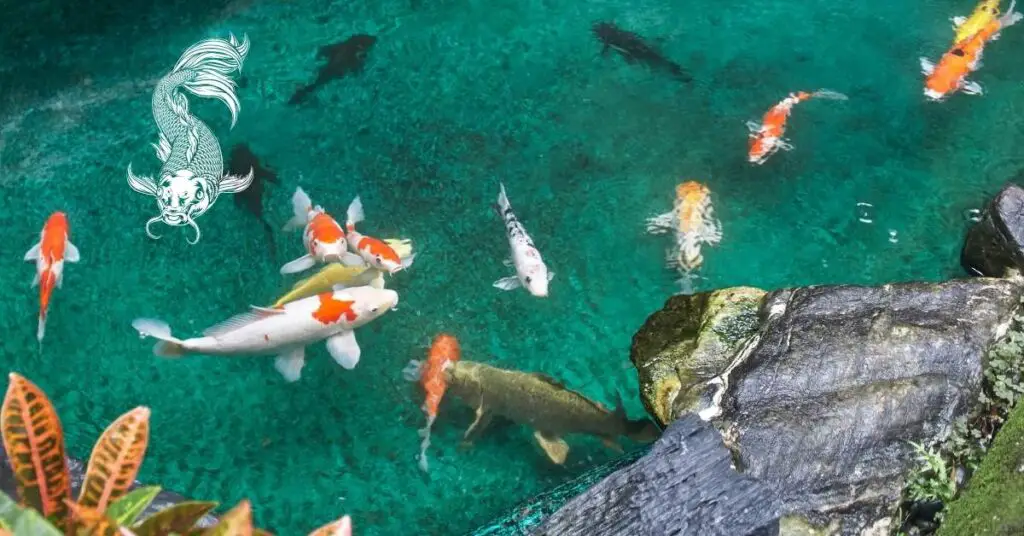
Make It Look Natural
One of the more obvious mistakes that amateur pond builders make is not properly concealing their pond liner. This usually means bits of plastic liner are poking out around the edges of the pond and possibly at the bottom as well.
Pond liner is used to keep the water in your pond from seeping back into the soil. It usually comes in the form of a large black plastic tarp that’s especially designed to hold water. Unfortunately, if the pond liner isn’t properly concealed it can ruin the natural look of your pond.
Thankfully, hiding pond liner is an easy way to make your pond look as natural and beautiful as possible.
How To Hide Pond Liner:
- Use Rocks: This is probably the most common method for concealing pond liner. In most cases, large flat stones are placed around the edges of the pond directly on top of the liner. This method is beneficial because it hides the pond liner completely as well as keeps it solidly in place. Just be sure to wash the stones before placing them and make sure there aren’t any jagged edges that can potentially tear the lining. Stones can also be placed on the bottom of the pond to keep the liner in place and prevent it from being seen when looking directly into the water.
- Use Plants: Placing plants around the edges of your pond is another great way to hide your pond’s liner and make it look more natural. This works best when using something long like grass or other leafy plants that will dangle over the sides of the pond and hide any artificial lining or edging. The dirt used to sustain the plants will work to hide the pond liner as well.
Add Waterfalls & Fountains
Waterfall and fountains are another great way to improve the look of your pond.
Everyone is attracted to the sound and sight of flowing water, so what better way to enjoy it than in the comfort and shade of your own backyard pond?
Waterfalls and fountains serve a more functional purpose than simple beautification, which makes them worth the extra effort it takes to build or install them.
Waterfalls keep water flowing in your pond which is vital in preventing stagnation. Stagnation occurs when the water is still which causes it to form stratified layers from top to bottom. Typically, when this happens, the bottom layer of water is the most toxic and depleted of oxygen. During hot summer months, this can lead to something called pond turnover, which is deadly to the life in and around your pond.
Fountains serve a similar purpose to waterfalls in that they keep water moving. But because a fountain shoots water into the air, which then falls back into the pond, it’s especially good at oxygenating the water. Oxygenation refers to the process of bringing oxygen into the water, which most life in your pond depends on.
Oxygenation occurs when water collects oxygen molecules from the air and deposits them back in the water. This oxygen then increased the levels of dissolved oxygen in the pond which supports life and promotes a healthy pond ecosystem.
Both waterfalls and fountains improve water quality in similar but slightly different ways, which is why it’s nice to have both if your pond is big enough to support it.
Related Post: How To Keep Your Pond Cool In Summer & Extreme Heat Waves
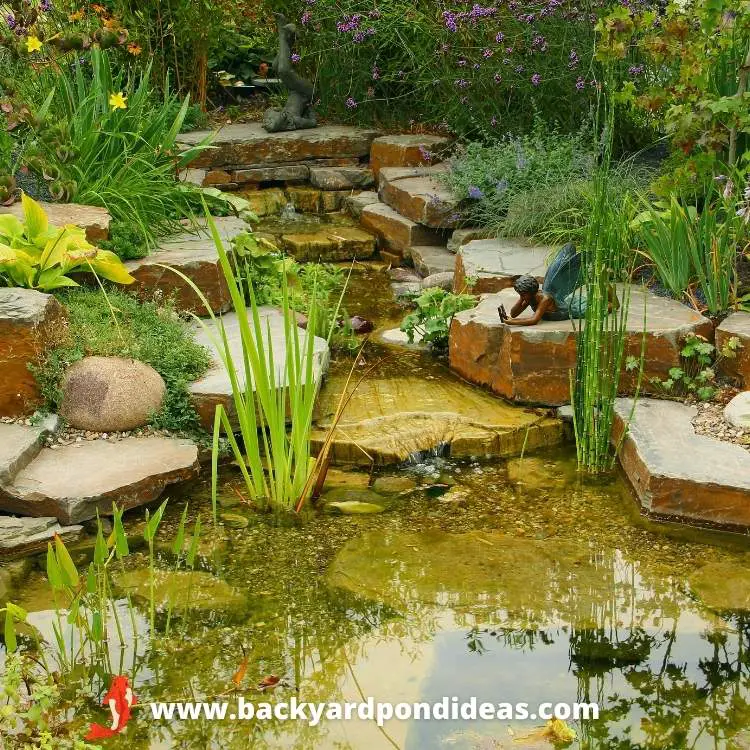
Other Ways To Make Your Backyard Pond More Attractive
If you’re looking to make your backyard pond more attractive, don’t just limit yourself to things that go in or around the pond. In my opinion, you should be thinking more broadly about your backyard in general.
Some things that I recommend considering for your backyard to make it more attractive are:
- Seating area – Comfortable chairs and a small bistro set near the oven allow you to enjoy pizza and views of the pond.
- Coppice/gazebo – A partially enclosed wooden structure over the seating area provides shade and a place to sit.
- Landscaping – Potted grasses, flowers, and shrubs soften the space and provide color along the pond edge.
- Outdoor kitchen – With prep space and a small sink, a kitchen nook allows convenient cooking near the oven.
- Outdoor Pizza oven – A stone or brick pizza oven with a chimney can make an attractive focal point near the water. But if that’s too complicated/expensive for you, a pre-built portable pizza oven can look great as well. I recommend going with a reputable pizza oven brand with good reviews like Ooni and Roccbox. Here’s a great review of Roccbox vs Ooni pizza ovens to help you make up your mind!
- Water lilies/lotus – Floating tropical plants add visual interest and wildlife habitat to the pond itself.
- Rockwork – Artfully arranged stones and boulders create a natural look along the shoreline.
- String lights – Festoon lights wrapped around trees or structures make the whole space magical at night.
- Small bridge – A footbridge provides access to a private sitting area or small island over the water.
Related Posts:
- How To Tell If A Pond Has Turned Over
- 5 Best Pond Vacuums for Small Ponds: Effective & Affordable!
- What pH Level Is Best For A Koi Pond?
- Milky, Cloudy Koi Pond Water: 11 Causes & Solutions
- 51 Backyard Pond Ideas – Visual Inspiration For Your Next Garden Pond Project
Related Questions:
How Can I Make My Pond Look Natural?
To make your pond look natural, make sure to conceal anything artificial like pond lining and edging with attractive plants and stones. Another great way to make your pond look natural is with the addition of fish like koi or goldfish, climate permitting of course.
How Do I Increase The Quality Of My Pond Water?
To increase the quality of your pond’s water, be sure to follow standard pond maintenance best practices. This includes ensuring a balance of different kinds of plants and fish, not overfeeding your fish and having an adequate pump and filtration system for the size of your pond. You should also take time every day to remove any debris floating on the surface of the water like leaves or sticks.
What Can I Put Around A Small Pond?
The best things to put around your pond are large attractive stones and an assortment of aquatic and semi-aquatic plants. The stones will help to conceal any pond liner as well as keep the water from overflowing onto your property. The plants, if they’re tall and leafy enough, will provide shade to keep the pond cool in summer as well as a habitat for pond creatures like frogs and lizards.
What Can I Put In Pond Water To Make It Clear?
To make, and keep, your pond water clear, the best solution is to install a filtration system. Pond filtration systems come in various forms but all of them work by filtering out unwanted debris and bacteria which are the primary causes of cloudy water. Other kinds of filtration system work by putting beneficial bacteria back into the water by passing the water through a biological filter media. The key to clear pond water is keeping organic debris out of the water which leads to algae blooms.


